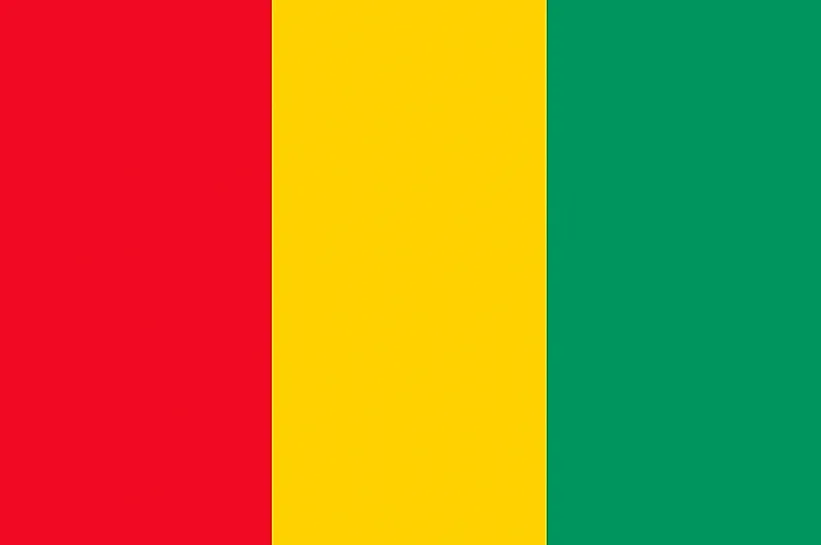
Guinea
| Continent | Africa |
| Capital | Conakry |
| Population | 12,093,349 |
| GDP | $16.08 Billion |
| GDP per Capita | $1,300 |
| Dialing Code | +224 |
| ISO Code (2-letter) | GN |
| ISO Code (3-letter) | GIN |
About Guinea
Welcome to Guinea, a nation known as West Africa’s “water tower” due to its numerous rivers originating from its highlands. With approximately 13.5 million people occupying 245,857 square kilometers, Guinea combines rich mineral resources with diverse ecosystems and cultural heritage.
Geographic Features and Natural Beauty
Guinea’s geography encompasses four distinct natural regions: Maritime Guinea (Lower Guinea), Middle Guinea (Fouta Djallon), Upper Guinea, and Forest Guinea. The Fouta Djallon highlands, known as the “Château d’Eau” (Water Tower) of West Africa, give rise to several major rivers including the Niger, Senegal, and Gambia.
The landscape varies dramatically from coastal mangroves through the mountainous Fouta Djallon to savannas and rainforests. Mount Nimba, a UNESCO World Heritage site, reaches 1,752 meters and hosts unique biodiversity including rare viviparous toads.
Protected areas include the Mount Nimba Strict Nature Reserve and the Upper Niger National Park, preserving diverse ecosystems and endangered species. The country’s climate supports rich biodiversity and agricultural production.
Cultural Heritage and Traditions
Guinean culture reflects the heritage of numerous ethnic groups, including the Fulani, Malinke, and Susu. Traditional music plays a central role in cultural life, with the djembe drum and balafon becoming internationally recognized symbols of African music.
The country’s oral traditions, maintained by griots (traditional storytellers), preserve historical knowledge and cultural values. Traditional arts include mask-making, textile weaving, and metalwork, particularly in the Forest Region.
Guinean cuisine features rice as a staple, complemented by various sauces and dishes reflecting regional diversity. Traditional festivals and ceremonies maintain connections to ancestral practices while adapting to contemporary life.
Historical Journey
Guinea’s history spans ancient empires including Ghana, Mali, and Songhai, through French colonization to independence in 1958 under Ahmed Sékou Touré, becoming the first French colony in Africa to gain independence.
The country’s post-independence period saw various political changes, while recent years have focused on democratic development and economic growth. Guinea’s role in regional history, particularly through the Mali Empire, continues to influence cultural identity.
Modern Economic Landscape
Today’s Guinean economy is based on mineral resources, particularly bauxite (holding about one-third of the world’s reserves), iron ore, gold, and diamonds. Agriculture remains important, with the country’s diverse climate supporting various crops.
Recent development initiatives focus on infrastructure improvement, particularly in the mining and energy sectors. The country’s hydroelectric potential from its numerous rivers presents opportunities for sustainable development.
International Relations and Global Position
Guinea maintains active participation in regional organizations including ECOWAS and the African Union. The country’s mineral wealth and strategic location make it an important partner in West African affairs.
Did You Know?
• Guinea holds about one-third of the world’s known bauxite reserves?
• The country is the source of several major West African rivers?
• Guinea’s Forest Region hosts some of West Africa’s last remaining rainforests?
• The djembe drum, now famous worldwide, originated in the Malinke regions of Guinea?
Conclusion
Guinea represents a unique combination of natural resources and cultural heritage in West Africa. From its role as a regional water tower to its mineral wealth, from its diverse ecosystems to its rich musical traditions, Guinea continues to evolve while maintaining its distinctive identity. As it addresses challenges including sustainable resource management and economic development, Guinea remains committed to harnessing its potential while preserving its natural and cultural heritage.





